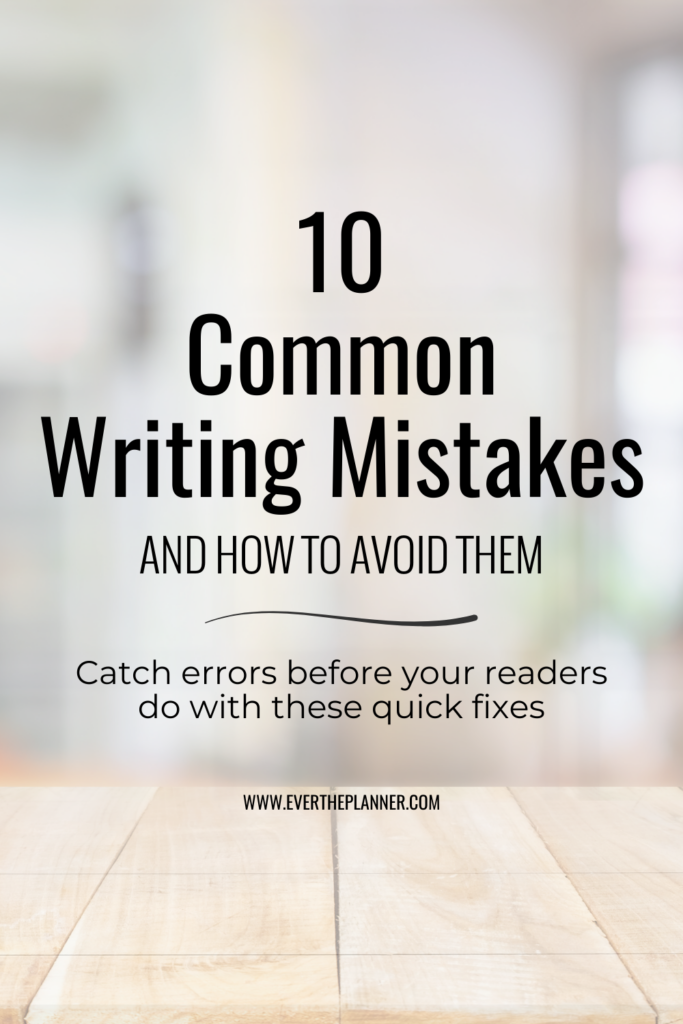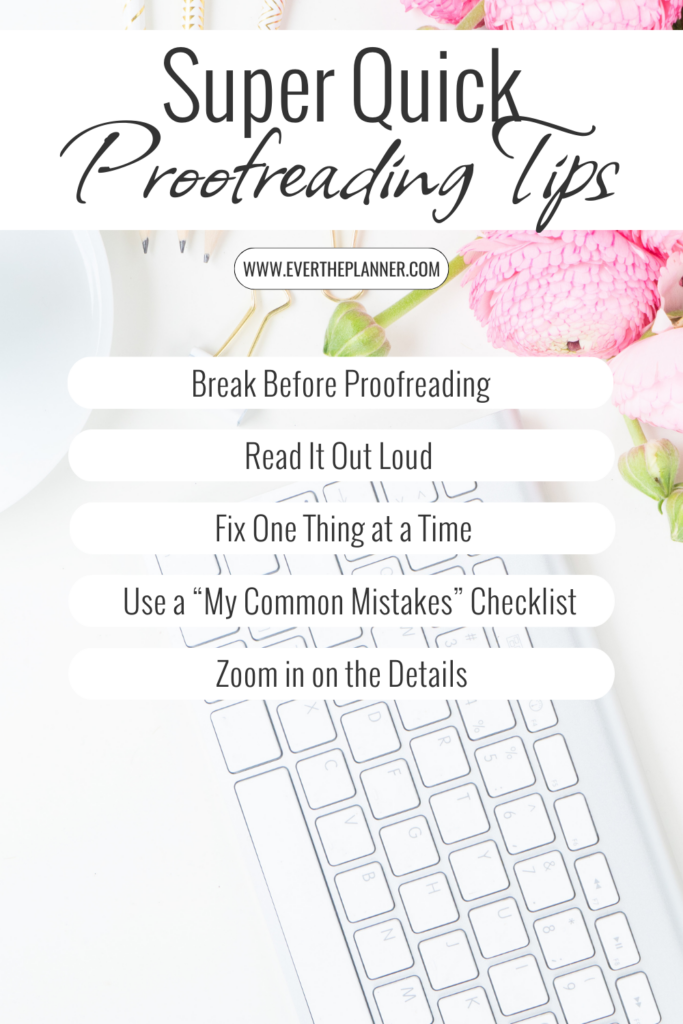10 Common Writing Mistakes (And How to Avoid Them)

Nobody’s perfect—not even the best writers. When you’re close to your own work, it’s easy to miss little slip-ups that sneak into your writing. That’s why catching common writing mistakes is such a crucial part of polishing anything you put out into the world.
The good news? Most writing mistakes are easy to fix once you know what to look for—and a solid proofreading process can help you spot them before your readers do.
In this post, you’ll learn:
- 10 of the most common writing mistakes to avoid
- Why proofreading is your best tool for how to catch writing mistakes
- Tips for proofreading your writing so your final drafts feel clean, confident, and professional
Let’s dive into the mistakes—and how to stay a step ahead of them.
🔎 TL;DR: What You’ll Learn
- The 10 common writing mistakes that sneak into drafts (even when you’re careful)
- Smart, simple tips for proofreading your writing to catch small errors
- How to spot and avoid writing errors before they hurt your credibility
- How a strong proofreading process makes your writing sharper and more professional

10 Common Writing Mistakes to Watch For (and Fix Fast)
Even strong writers make mistakes—and most of them are easier to miss than you might think.
Proofreading carefully is the best way to catch writing mistakes before your readers ever see them.
Here are 10 of the most common writing mistakes to avoid (and quick tips to fix them fast):
1. Misspelled Words
Spellcheck helps, but it’s not perfect.
Words like “form” instead of “from” or “bare” instead of “bear” are spelled correctly—but they’re wrong for your sentence.
Always give your final draft a careful read to catch common grammar mistakes like these that slip through.
2. Missing or Repeated Words
When you’re writing fast, it’s easy to accidentally skip a word—or type the same one twice.
Tip: Read your work out loud. Your ear will catch missing words your eyes might skim past.
3. Wrong Word Choices
Homophones (words that sound the same but mean different things) trip up a lot of writers.
Mix-ups like “their,” “there,” and “they’re” or “affect” vs “effect” can confuse readers and weaken your message.
Double-check word meanings during proofreading to avoid writing errors that hurt your credibility.
4. Run-On Sentences
Trying to cram too many ideas into one sentence usually backfires.
If a sentence feels long or confusing when you read it out loud, it probably needs to be broken into two (or more) clear thoughts.
5. Sentence Fragments
A sentence fragment is an incomplete thought. It might be missing a subject, a verb, or both. Make sure every sentence you write can stand on its own and clearly express an idea.
6. Misused Apostrophes
Apostrophes cause a lot of common grammar mistakes.
Mixing up “it’s” (it is) and “its” (possessive), or adding apostrophes where they don’t belong (like in plurals), are easy mistakes to make—and easy to fix once you know to check.
7. Shifting Tenses
Jumping between past, present, and future tense can confuse readers. Try to stay consistent within a paragraph, and always double-check that your verbs match the timeline you’re writing about.
8. Awkward or Wordy Sentences
Overcomplicated sentences weigh your writing down.
If something feels hard to say out loud, it probably needs trimming for clarity.
Tip: Focus on simplicity—it’s stronger.
9. Missing Punctuation
Forgetting commas, periods, quotation marks, or question marks can make your writing feel sloppy.
Proofreading with fresh eyes helps you spot places where punctuation is missing or misused.
10. Inconsistent Formatting
Little things like extra spaces between paragraphs, inconsistent fonts, or uneven headings make your writing look messy.
Always do one last check for consistent formatting before you share your work.
Big Picture Reminder:
Most of these common writing mistakes are easy to fix once you slow down and give your writing a second (or third) look.
Proofreading is what helps strong ideas land clearly and professionally.

Quick Tips for Proofreading and Catching Common Writing Mistakes
You don’t need hours or a red pen to spot writing mistakes—just a few smart habits.
Here are some fast, beginner-friendly tips for proofreading your writing that can help you catch more errors (and stress less):
- Zoom in on the details. Skim reading won’t cut it. Slow down, look closely, and give each sentence a second glance.
- Say it out loud. If something sounds weird when you read it, it probably needs editing. Your ears catch things your eyes don’t.
- Fix one thing at a time. First check spelling. Then punctuation. Then formatting. Breaking it up makes it less overwhelming.
- Use a mini checklist. Create a short list of your most common writing mistakes to avoid—and use it every time.
- Give your brain a break. Step away before proofreading. Even a short pause helps you come back with sharper focus.
Even a 5-minute proofreading habit can make your writing clearer, stronger, and more trustworthy.
Final Thoughts: Common Writing Mistakes Are Fixable (With the Right Help)
Everyone makes mistakes—even experienced writers. The key is learning how to spot and fix the most common writing mistakes before they hold your message back.
Proofreading gives you that final layer of clarity. It helps you slow down, spot what’s not working, and share your writing with more confidence.
And if you’d like a second set of eyes to help you avoid writing errors and give your work a clean, polished finish? I’ve got you.
👉 Click here to learn more about my proofreading services.
Your writing is worth sharing—and it’s worth getting right.
Let’s make sure it’s as strong as the ideas behind it.





Be the first to comment